RENGA ARCHITECTURE
Renga Architecture is the first domestic Bim-system for architectural and construction design. The program is fundamentally different from many other engineering programs for industrial and civil construction in that it was initially oriented to three-dimensional design and allows architects, designers and planners to create 3D-information models of buildings and structures with the subsequent receipt of drawings of the AR and AC brands.
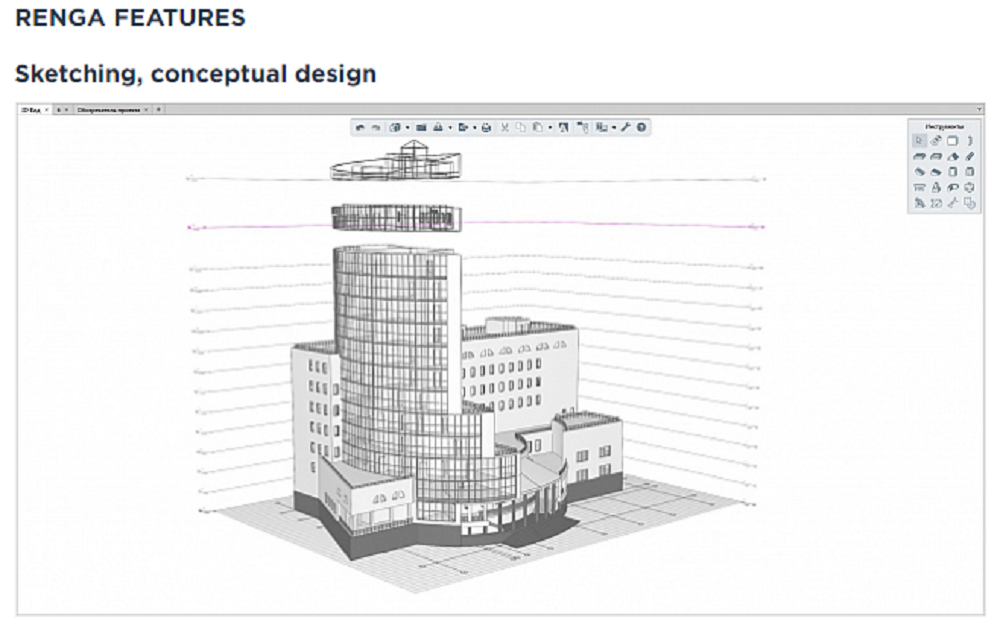
At the initial stage of design, the architect needs a tool that allows you to quickly and easily simulate the look of the future building.
Work in the Renga BIM-system is based on 2 basic principles - designing in 3D space (for quick and easy work) and a simple context-oriented interface (for convenient and simple interaction with the 3D model).
The architect begins to create his building in 3D-View, using object tools (walls, beams, windows, etc.) for modeling. At any time, you can switch to the plan and continue to create a 3D model there.
Many professionals appreciated this approach to design and recognized that the speed of work in Renga Architecture is higher compared to other programs.
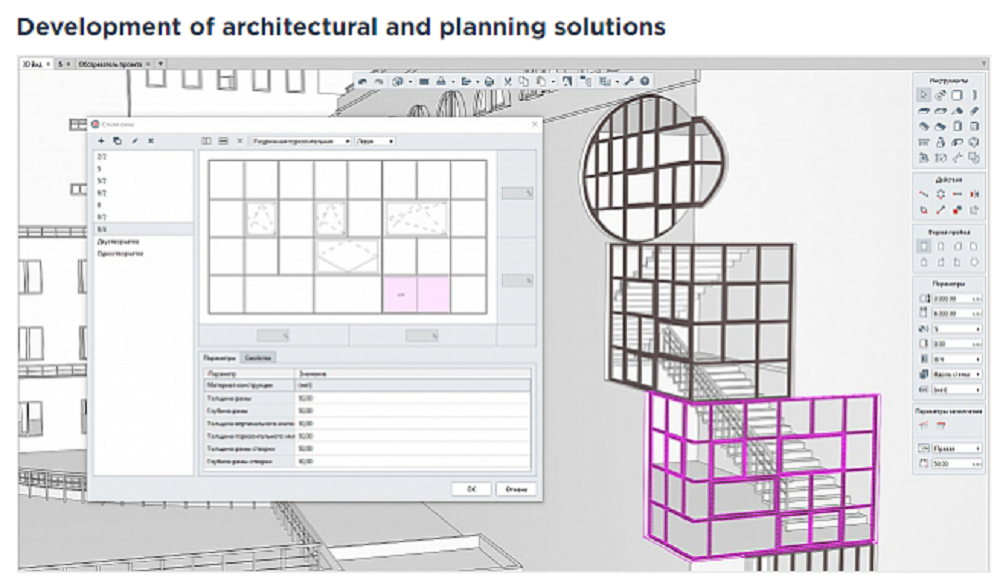
For a more detailed study of the architectural model, Renga Architecture provides tools for quickly creating / editing objects - Styles, Assemblies and Profile Editor.
Literally in a minute you can create your own style of a window or door, arrange vertical and horizontal imposts in it, assign construction material, determine the type of opening for the sashes, and also set the dimensions of the frame, imposts and sashes of the structure. The resulting style can be assigned to openings of any shape and size.
To create complex building elements consisting of several objects, there is an Assembly tool. From standard Renga tools (beams, stairs, floors, etc.), you can construct, for example, a beautiful flight of stairs or a designer fence. By combining them with the assembly, you can work with them as with one element.
The user profile editor allows you to draw any parametric profile for beams and columns. Design a unique building frame from your profiles or create decorative elements, for example, cornices, plinths, pilasters, etc.
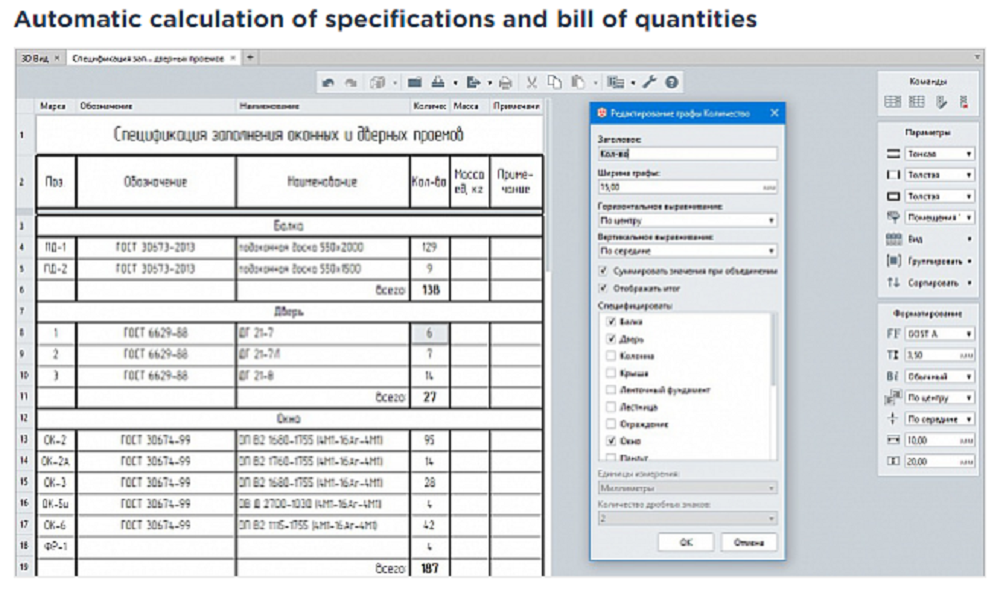
To accurately calculate building volumes and quantities of materials, Renga Architecture has a BOM tool. It automatically collects data from 3D-model objects and generates reports on them in a tabular form. In this case, specifications are automatically recalculated upon changes in the 3D model.
An architect can create his own specifications, or use ready-made templates. The program already has templates configured according to GOST - “Explication of premises” and “Specifications for filling window and door openings”. An architect can change the appearance of a specification, group by various properties, apply filters, add custom properties.
To get the correct volumes for the decoration of rooms, the program has a template “Sheets of decoration of premises”, which automatically collects the calculated characteristics of the premises - the area of walls, the area of the floor / ceiling, the length of the plinths minus the openings in the building envelope.
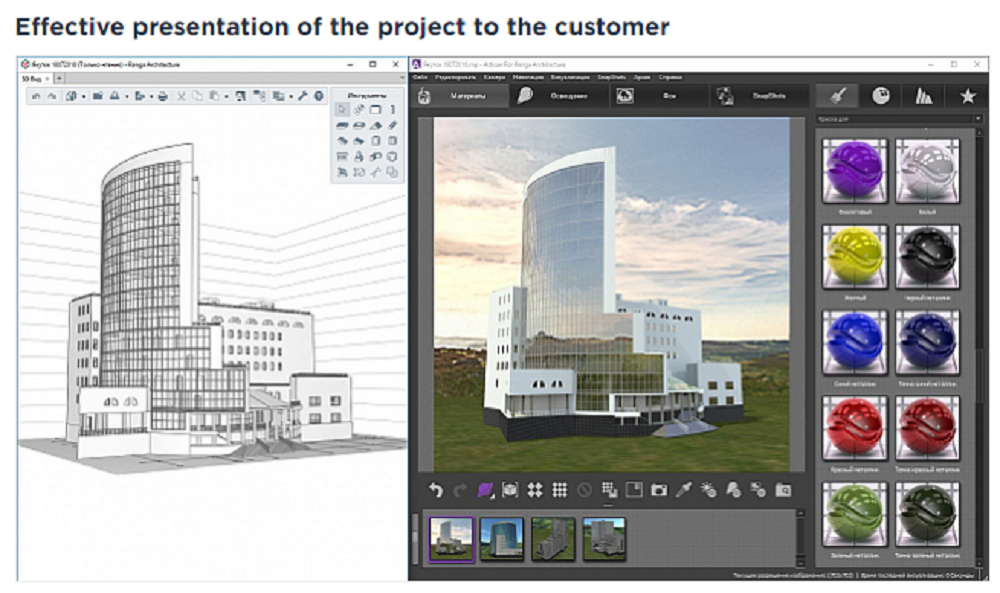
To prepare presentation materials, you can perform high-quality photorealistic images (renderings) through texture mapping and material assignment. For this, PICTOREX Ltd has developed the Artisan Rendering application, which can be installed on Renga Architecture.
In addition, Renga has the ability to export 3D models to 3D graphics formats - * .obj, * .dae, * .stl for rendering in popular programs 3Ds Max, Blender, Lumion, etc.
To create a volumetric layout, you can print the building model on a 3D printer by exporting to * .stl format.
The most effective way to present a project to a customer is to take a virtual walk through the 3D model with virtual reality glasses (VR). The Renga program has been linked to Occulus Rift VR glasses. Having put them on, you can see with your own eyes the future building, evaluate the architect’s plan and the technical decisions made.
Take a virtual walk around the building with the 3DConnexion 3D manipulator, which, like VR glasses, is integrated with Renga.
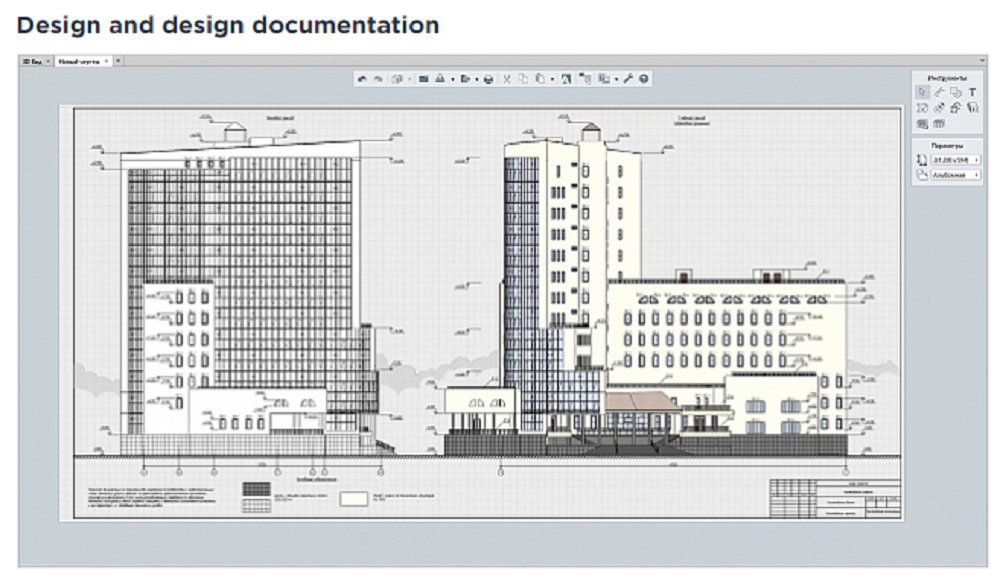
Built-in drawing editor allows you to create a set of design / working documentation.
Editor tools are designed to maximize the automation of drawings. The main types of buildings (plans, facades, sections) - are created automatically from a 3D model.
And with the help of design tools, you can quickly draw up a drawing both according to Russian standards for drawing up SPDS drawings, and according to international ISO.
Display styles let you customize the visibility and level of detail of objects in drawings. Thus, from one view, for example, a plan, you can get several drawings: a masonry plan, a plan for the arrangement of equipment, an evacuation plan, a plan of beams and columns, etc.
It is also possible to export / import drawings in DWG / DXF format to interact with other CAD systems (for example, AutoCAD).
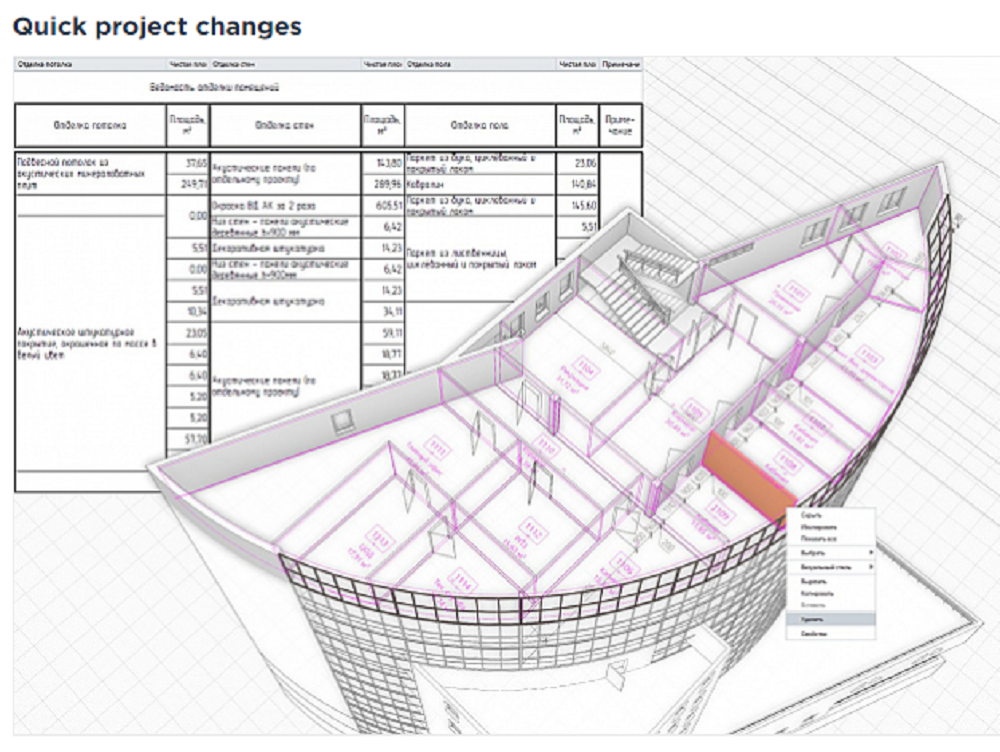
At any design stage, changes always appear. Renga's BIM system provides architects with tools to help minimize the costs of making changes to the project. Whether you are following a floor plan or a product drawing, the dimensions you set will track changes made in the 3D model. Whether you move the partition on the plan or change the height of the window, the dimensions are automatically recalculated. Premises will always be associated with the structures surrounding them. When changing the dimensions of the premises in the plan, the areas of floors, walls and ceiling are automatically recounted.
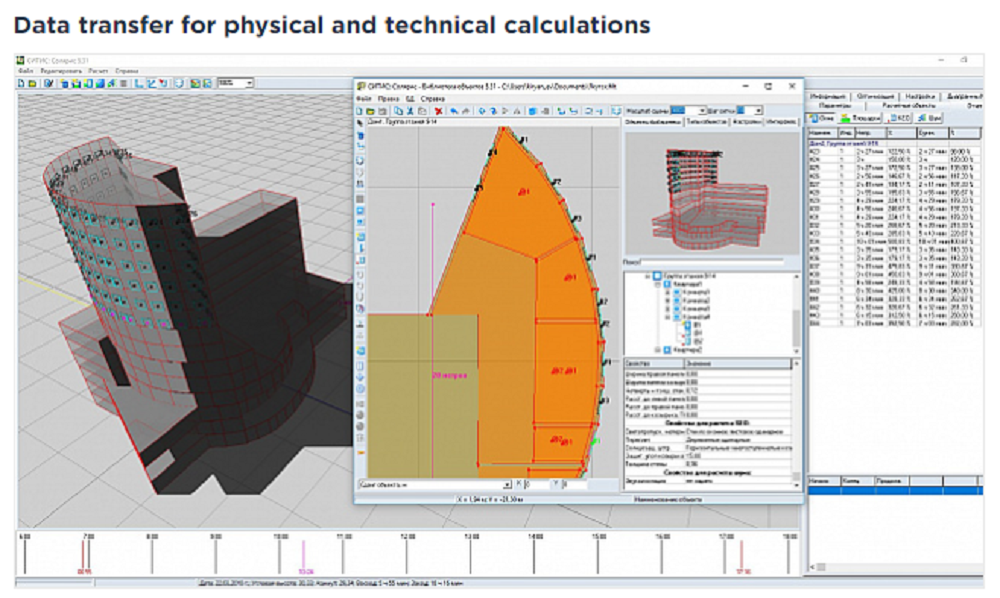
The BIM model created in Renga Architecture, in addition to 3D geometry, can be filled with information about the physical properties of building materials (material, density, thermal conductivity), about the types of interior decoration and exterior decoration of facades. These data, together with the 3D model, can be transferred to third-party calculation applications (for example, CITIS: Solaris or CITIS: Truck) and perform the thermotechnical calculation of external building envelopes in them or the calculation of the natural illumination of KEO. For transfer to settlement applications, Renga BIM-model is enough to export to IFC format.
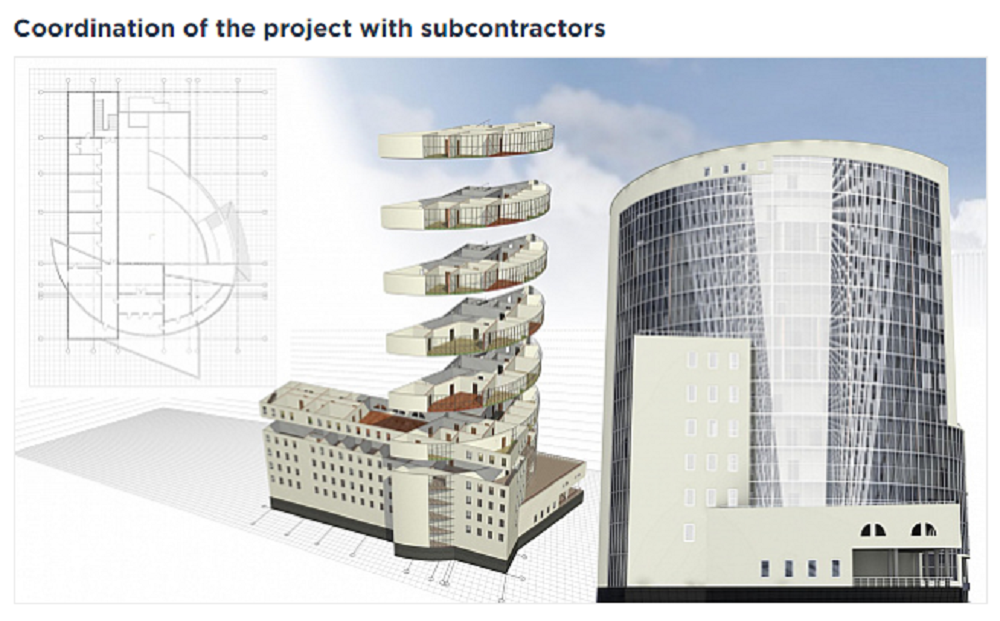
In Renga's BIM system, both the architect, the designer, and the design engineer work on the same 3D model. Each project participant can always see what changes his colleagues have made. Such work in a team helps to avoid errors associated with the mismatch of the architectural model with the design or model of internal engineering networks. And also reduces the time for approval. If designers who create their own section of project documentation in other programs are connected to the project, then coordination can be done both at the BIM model level, exporting data to the IFC general exchange format, and at the drawing level, exporting to DWG / DXF format. At the same time, it is convenient to exchange tasks for changes through PDM systems, for example, Pilot-ICE.
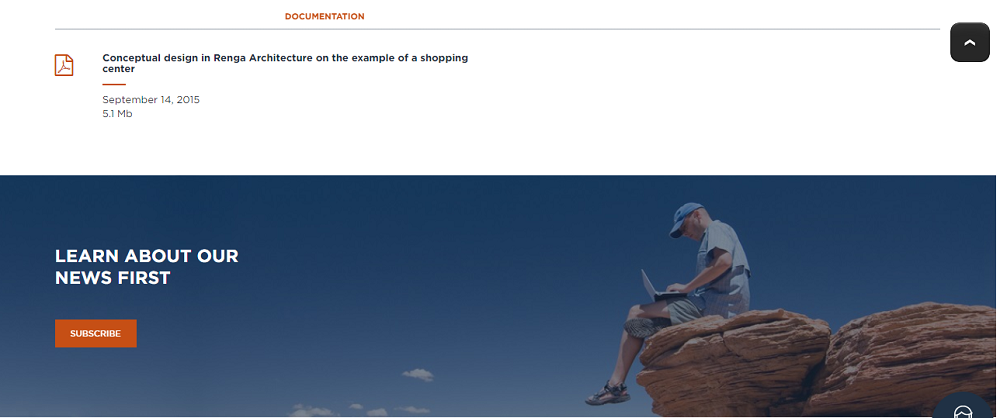
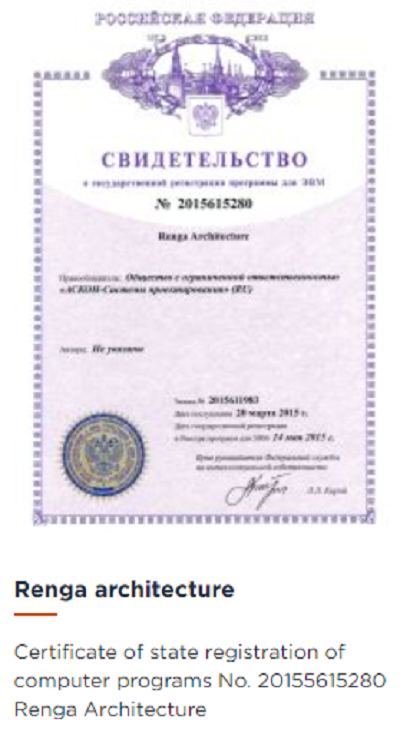
DOWNLOAD RENGA TRIAL
No one will appreciate you better whether the Renga system is right for you. We are confident that the capabilities of Renga Architecture and Renga Structure will help you for both conceptual modeling and architectural design.





